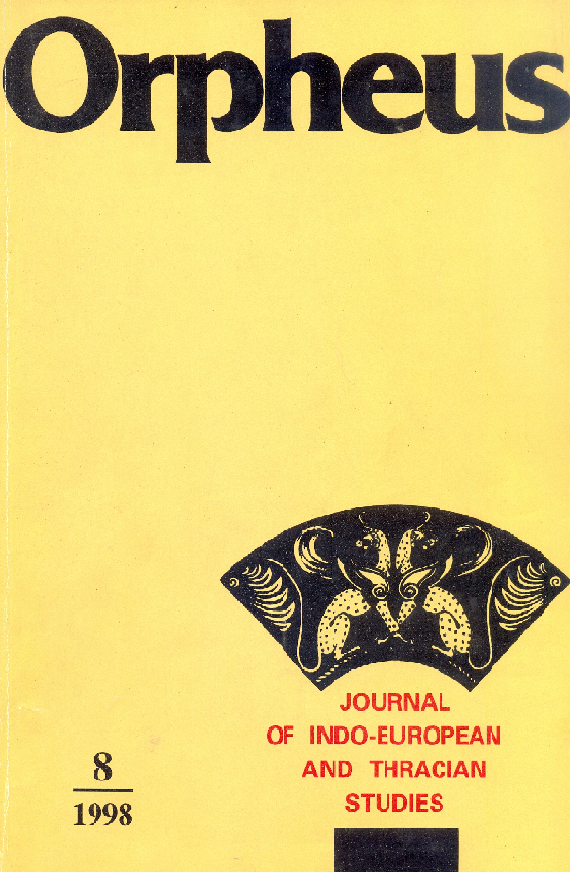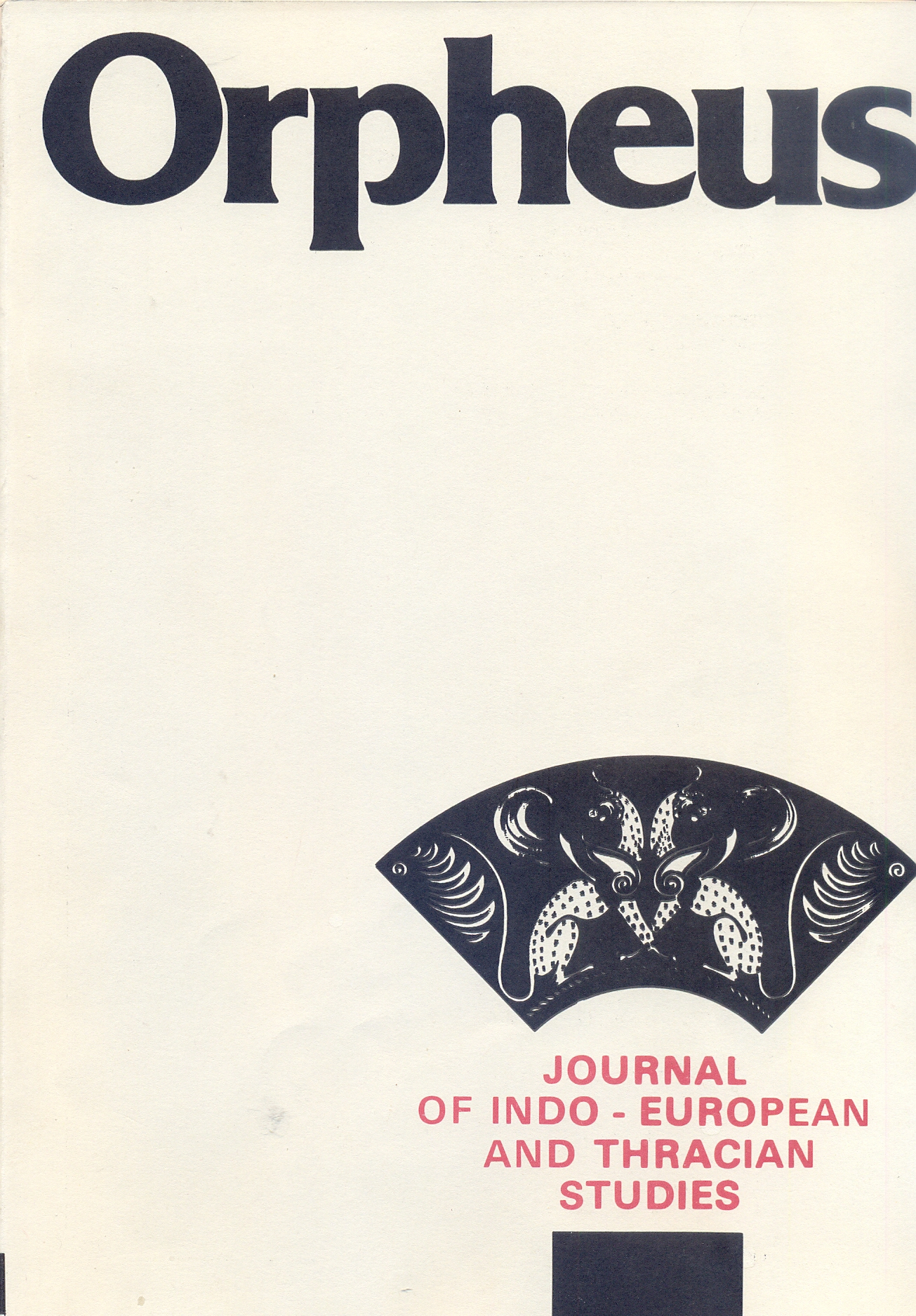
We kindly inform you that, as long as the subject affiliation of our 300.000+ articles is in progress, you might get unsufficient or no results on your third level or second level search. In this case, please broaden your search criteria.



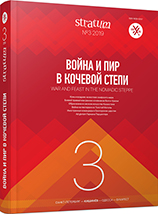
The study is devoted to traumatic injuries on the crania of the early nomads of the Volga-Ural region. According to the results of the analysis it can be noted that a small number of injuries together with no stress indicators suggest a safe existence of the population of the early Iron Age in this territory. It is important to say that the injuries are mostly antemortem (with traces of healing) and were probably received in combat. Provided that there are practically no fatal injuries in the burial grounds, this may indicate the absence of conflicts on the territory of the nomadic Savromatian-Sarmatians. However, the abundance of weapons in burials suggests that the society was rather militarized, while the number of individuals with injuries incompatible with life is negligible. Apparently, military conflicts took place outside the territory occupied by the early Savromatian-Sarmatians, which may suggest existence of a major tribal union that influenced the historical processes in Eurasia.
More...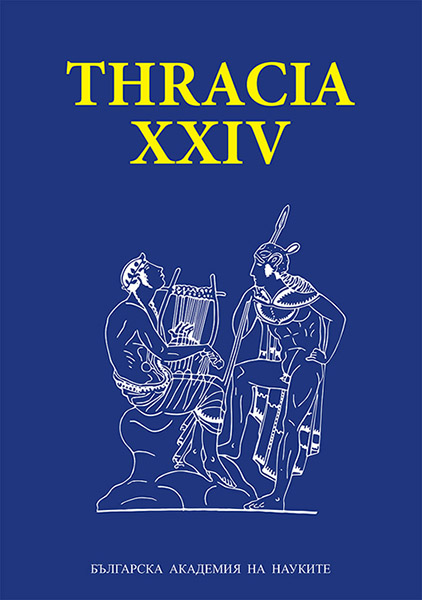
The Thracia Pontica range of issues was perceived and named by Professor Alexander Fol in the 1970s as a resut of the complex expeditions Apollonia – Strandzha and Mesambria – Haemus, organised by the Institute of Thracology of the Bulgarian Academy of Sciences. During subsequent decades, the following important results were obtained. A national Centre of Underwater Archaeology was established with seat in the town of Sozopol (1978). Eight international symposia Thracia Pontica have been organised, as well as annual national and international expeditions. The view on the Thracian maritime culture along the coasts of the Aegean Sea, the Sea of Marmara and the Black Sea as an integral part of the history and culture of the Eastern Mediterranean is substantiated. Thracia Pontica constitutes part of the issues connected with Mycenaean Thrace (mid-second – mid-first millennium BC) because the Mycenaean religious, political and cultural models penetrated from the south to the north by sea. The Thracia Pontica range of issues comprises also the Thracians from Northwestern Asia Minor and its coastal areas, including the Aegean islands Thasos, Samothrace, Imbros, Lemnos and Naxos. The settling and the development of the Greek apoikiai along the Thracian coasts proved to be a process in which the two sides – the Thracian ethnos-related and the Greek polis-related sides – were mutually complementary and they interacted, playing hence the role of contact zones. The Summer University Strandzha Mountain and Its Role for the East–West Transfer of Civilisations was created on Alexander Fol’s initiative in 2002 and it functioned until 2015. Between 2009 and 2018, the Neophyte Rilski Southwestern University in Blagoevgrad implementeted research projects every year, connected with the range of Thracia Pontica issues along the Black Sea, Sea of Marmara and Aegean coasts.
More...
The article traces the life and creative path of Professor Alexander Fol, the founder of the Bulgarian School of Thracology. Professor Fol is the author of more than 400 specialised publications: books, including 16 monographs, studies and articles published in Bulgarian and foreign languages in Bulgaria and abroad, as well as dozens of popular academic studies, articles and textbooks. He dedicated nearly 50 years to the study of all aspects and problem circles of the history of ancient Southeastern Europe, pointing out the way in which the history of Ancient Thrace and the Thracians must be studied and written as part of the history of the Antiquity of Europe, Africa and Asia. Professor Fol created both the theoretical and the institutional frameworks of Bulgarian Thracology. By postulating the principle of interdisciplinary research as the basis of Thracian studies, he created the concept of the Institute of Thracology, which united the efforts of a team of researchers specialising in various fields of Thracology. Along with the establishment and development of the Institute, Professor Fol, together with Prof. Mihailov, Prof. Velkov and Prof. Venedikov, initiated the exhibition Thracian Treasures, which gave an impetus to the development of Thracian studies abroad. The exhibition has visited the largest museums around the world, organised under the academic guidance of Prof. Alexander Fol from 1974 to 2005. Professor Fol was the initiator for the launching of the National Museum of History in Sofia (1979), founder and Chairman of the Society for Ancient History and Thracology (1979–1987), initiator of the creation of the research institute at the Bulgarian Cultural House in Vienna. Alexander Fol’s creative work was also aimed at introducing Thracology as a fundamental discipline in the curriculum of universities in Bulgaria. In 1977 he initiated the establishing of the National School of Ancient Languages and Cultures in Sofia. Professor Fol developed the methodology, specified the academic concept, expanded the chronological boundaries and geographic diaspora of research on Thracian antiquity, and taught us that intellectual energy was immortal. He bequeathed to us his story of the Thracians, expecting each of us to write his/her own story.
More...
The aim of the present paper is to propose a study on the narrative about the destruction of Babylon in 689 BC, presented in the royal inscriptions of its destroyer – Sennacherib, and of its restorer – Esarhaddon. Both groups of texts expose different points of view on the event in relation to their structure, composition and message. In the first part of the paper, some basic historical facts on the event are summarised in the light of the previous research and their conclusions. The destruction came as result of prolonged war between Assyria and a coalition of Babylonia and Elam in the period 694–689 BC. It came also as a result of Sennacherib’s unsuccessful policy in Babylonia prior to the conflict aimed at imposing Assyrian domination. The second part of the study is concentrated on Sennacherib’s version of the destruction described in his inscription from Bavian (Sennacherib No. 223). A translation of the passage under discussion into Bulgarian is proposed. The narrative scheme is examined in detail, and several episodes in its story are defined. This version of the destruction is called here the version of the convenient memory, because it exposes a traditional story in form and meaning, representative for the Assyrian royal inscriptions and their propagandistic content where the king and his anger have a key role in all deeds described. The third part of the paper is concentrated on the second version for the destruction, narrated in the inscriptions of Esarhaddon, with emphasis on inscription Esarhaddon No. 104, known from several copies from Assyria and Babylonia. A translation of the passage with the narrative into Bulgarian is proposed. The story in this text presents a very different view to the event in several episodes and ascribes the destruction to the main Babylonian deity – Marduk – and his anger. A comparison of both versions shows serious differences in their narratives and explains the logic behind these differences. The second version on the event is named in the paper the version of the convenient oblivion, because it gives a different explanation for the destruction, centered on the deity’s anger. The aim of the fourth part of the study is to analyse the composition of the second version in relation to its variants and sources in the light of the royal inscriptions of Esarhaddon. Several episodes of the story are presented with major or minor variations in form, meaning and structure of the narrative in different royal texts. Parallels are made with inscriptions Esarhaddon Nos 108, 116 and 113. All modifications (variants) are seen here as an instrument of the propagandist nature of the message in the text. The sources used for the composition of the second version differ in type. There is intertextuality among inscriptions of Esarhaddon, as well as phraseological use of passages from the royal inscriptions of Sennacherib, the ritual series Šurpu and the Gilgameš Epic. The diversity of sources used in the composition of the second version is remarkable, as also the literary abilities of the royal scribes, and the king himself. The last, fifth part of the study deals with some conclusions on the nature, aims, spreading and reception of the second version. The message of the passage is well composed and aimed at a wide public, mainly in Babylonia. Its main goal is to propose a theological explanation for the destruction of Babylon, where Assyrians are replaced by Marduk in the role of the destroyer. The arguments in favour of this explanation in the text are based on beliefs of ordinary people and ascribe their personal tragedy to god’s will. The use of widespread elements from the consciousness and the psychology of the ancient Babylonians is seen as the main manipulative achievement of the second version. Some notes on the reception of the version are added in the light of a later text – a passage in Nabonidus’ inscription from Babylon, where the destruction is explained in some of the terms noted early in Esarhaddon’s narrative of the event.
More...
Various mythological stories relate the case about Mopsos, the Seer. He took part in the expedition of the Argonauts, often mentioned together with Orpheus. He also participated in the Trojan War. On his way back from Troy he challenged the famous prophet Calchas and won the competition with him. It took place at Klaros, at Apollo’s sanctuary. Mopsos’ journeys, as told by the ancient authors, locate him along the western/southwestern and southern coast of Anatolia. He became founder of cities in Lycia, Pamphylia and Cilicia, the most famous of which was Mopsou(h)estia. Recently graffiti carved on one of the logs from the construction of the tomb in Tumulus MM at Gordion were found. These are four names, one of which is Muksos. It is a variant of the name Mopsos. In its eastern variant, Muksus, the name is known from second millennium BC Hittite texts. It is also attested in Linear B documents, thus it is difficult to define its origin. In the first millennium BC, the name appears as Muksas in the Karatepe bilingual Luwian-Phoenician inscription. There the kingdom of Que (future Cilicia) is mentioned as “the house of Muksas”, while the king claims that he is “of the line (dynasty) of Muksas.” The present paper further discusses recent developments in the studies of Luwian inscriptions and new attestations of the name Hiyawa (considered as a variant of Ahhiyawa), applied to Que. Southeastern Anatolia might have been the zone where Luwians, Greeks and Phoenicians met. It could have also been the place where Greeks and Phrygians adopted the alphabet. Thus, Mopsos the Seer, might have been a literary metaphor and a remote echo of the contacts between Luwians, Greeks, Phrygians, Thracians and Semites in two different periods: at the end of the second millennium BC and around the 9th–8th centuries BC.
More...
The sacred discourses (hieroi logoi) are a group of ancient texts that existed in some philosophical and religious movements such as Pythagoreanism, Orphism, the cult of Dionysus and the goddess Isis. Due to their secret content, much of these discourses is now lost or known only partially, by accounts of various Greek authors such as Herodotus, Pausanias and Plutarch. Excerpts of these works can therefore be regarded as testimonia to various details on the content, authorship and transmission of these discourses. According to some of these testimonia, Orpheus and Thrace were involved in the composing and transmission of some of the most ancient hieroi logoi. The paper intends to explore aspects of the image of Thrace and its role in religious communication based on these testimonia. After a brief introduction, it will focus on the narratives related to the region. According to a tradition related by Iamblichus and Proclus, Orpheus was the author of a sacred discourse that was thereafter transmitted to the Greeks. Both the creation and the transmission took place in specific locations in Thrace. The analysis of that tradition, along with the locations and the techniques of transmission it refers to, suggest that these locations were associated with a special kind of religious knowledge, hence their mention played a significant role in the narrative and in conveying its message.
More...
Apollonia Pontica is the earliest Greek apoikia on the Bulgarian Black Sea coast. The Greek city was founded at the end of the 7th century BC and gradually acquired the appearance of a classical, well-developed city centre with monumental public buildings, fortress walls, organised residential neighborhoods, necropolis and suburban territories. As a result of the surveys over the past 25 years, new data have been gathered on the urban planning, public works, citizens’ lives, and the symbiosis between the Thracian tribes: Skirmians and the Ionian colonists. Survey results show that since the very beginning, the settlers occupied the St. Cyricus Island and the Skamni Peninsula. They created and developed a pre-planned city, where continuity and long-term use of public and residential buildings is observed. For the first time in 2017, the complete structure was fully explored since the earliest period of the city: the first years of settling of the colonists. A dwelling dug into the rock from the end of the 6th to the beginning of the 5th century BC was discovered. The related archaeological materials reveal a great variety and luxury in the life of the citizens. By examining the city’s pre-planning, the continuity in the location of neighborhoods, buildings and street network, and the conservatism of the society of that time, a hypothesis was proposed for the commercial part of the city, where some of the most important public buildings had existed. Unknown to research until 2017 is the fortified fortress found on the territory of Apollonia Pontica and located in the land of the village of Ravadinovo at approximately 6 km from the coastline. The explorations initiated discovered sections of a wall of considerable size (with preserved height of 1.80 m and thickness from 1.60 m to 2.20 m). A massive building (citadel) was discovered in the protected area. Based on the analysis of the archaeological finds at this stage of the study, the site is placed in the chronological framework of the most powerful period of the colony development (mid-5th century BC – second half of the 4th century BC).
More...
The subject of this study, similar to other objects included in the sacred infrastructure of the Bessi, has the characteristics of a rock-cut megalithic facility. It is located at the foot of the Rhodope Mountain, on the eastern side of the Assenitsa River, about 2.5 km north of Assen’s fortress and about 2 km north of another similar object of the sacred infrastructure of the Bessi in this region: Anathema. It has neither been studied nor published. It is a rock facility comprising several distinct enclosed spaces and connections between them, carved in one of the rocks over Asenovgrad, under one of the many chapels in the town: the St. Petka chapel.
More...
A boundary can have different tangible and intangible forms, and it has a complex, usually subjective meaning since it depends on the perspective of the perceiving person. The boundary defines and changes the essence of what it surrounds. Architecture, as one of the earliest human activities aimed at enclosing spaces, is fairly able to express the complexity of this abstract term. Using both physical and metaphoric means, architecture sets boundaries defining oppositions like in/out, known/unknown, sacred/ profane, terrestrial/celestial. This distinguishing quality is most clearly pronounced in cult architecture, where part of the process of creating sacred atmosphere consists in juxtaposing and distinguishing the enclosed space to that of the profane (the environment). This paper considers some of the earliest examples of cult architecture, where the first boundaries were set, defining concrete space as sacred. Gradually, the structure of these buildings became more complex and developed into a whole system of material and virtual boundaries defining also the rules (rituals) of crossing them. For the aim of this paper I present and analyse Thracian cult buildings found on the territory of Bulgaria as representatives of the ancient cult architecture. It is my purpose to trace and identify different boundaries inherent in their structures and suggest interpretations of their symbolism.
More...
The paper discusses a magical incantation on a lead tablet from the so-called tabellae defixionum. Among the invoked deities in the text of the incantation of special interest is the mentioning of the names of the Samothracian gods, otherwise known only from a fragment by the 3rd century BC mythographer and geographer Mnaseas. The presence in the text of an invocation of Dionysos, and of other deities connected with the mystery cults, is an interesting evidence about the connection between the mystery and magical rites during the Late Antiquity.
More...
The paper presents the new evidence on Egyptian deities in Serdica during the Roman period. A fragment of pediment known since the mid-20th century contains a partially preserved inscription pointing to the possible existence of a temple of Serapis in Roman Serdica. The inscription is dated to 161–163 AD and informs that the fragment comes from a temple dedicated to Zeus-Capitolinus-Helios-Serapis, built by the town magistrates. Some new archaeological, epigraphic and numismatic evidence from Serdica attests that in the 2nd century AD, under the Antonines, the cult of Serapis was already well known. Moreover, a newly-found coin of Gallienus, minted in Serdica and bearing a depiction of a temple with a statue of Serapis between its columns, proves the real existence of a temple of this deity. The Goddess Isis has so far been attested in the ancient town only on some coins minted in Serdica from the time of Marcus Aurelius. Our study presents some new evidence about her cult as well. A torso of the Goddess was found during excavations in the centre of Sofia. In addition, the images on a well-known monument coming from Serdica and dated to the first decade of the 4th century AD must be revised. Because of its clearly Eastern elements, the images on it could be related to Isis and not to Cybele, as was supposed. All of the mentioned evidence testifies to the importance of the cults of the Egyptian deities Serapis and Isis in Serdica during the Roman Period.
More...
The aim of the study is to comment several types of sacred sites and artifacts originating from Ancient Thrace that have survived until the beginning of the 21st century being adopted in various forms by Christianity. They represent an interesting but little known part of the cultural heritage of today’s Bulgarian lands.
More...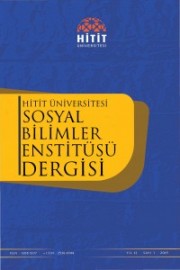
While using the objects from archaeological context to reconstruct past civilizations, it is impossible not to explore the daily economic activities of past civilizations. With the Neolithic, the economy rose with the management of limited materials and resources, becoming a major part of life. The abovementioned economy is a type of system that is sustainable. It also has equivalent production and consumption units. However, this started to slowly change towards the end of the Neolithic. When comparing cultures from the regions of Syria and Mesopotamia, one can see there are similarities in material culture, which are reflecting the production mode.
More...